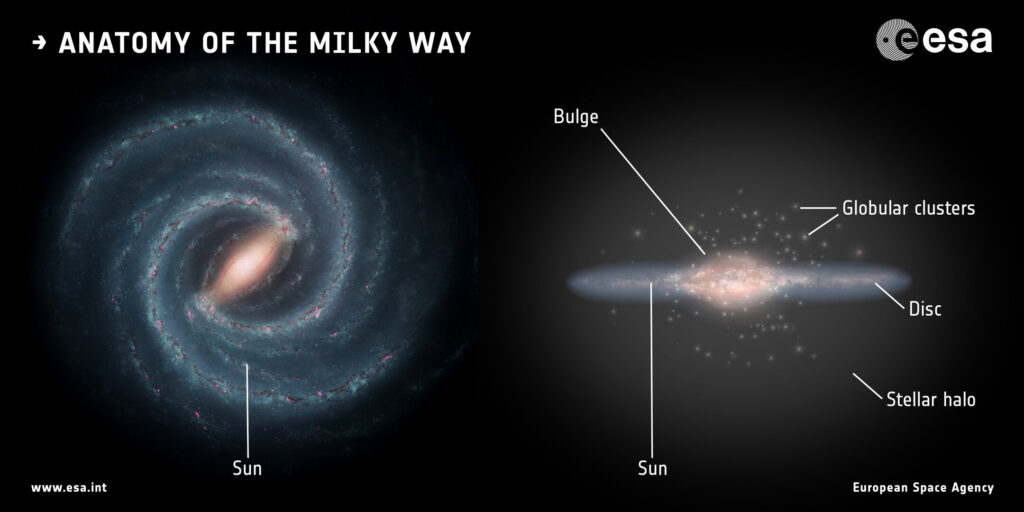After analyzing the data collected by the Gaia Space Observatory, scientists from the Max Planck Institute for Astronomy identified two ancient star streams. They are remnants of proto-galaxies that merged with an early version of the Milky Way in the distant past.

12 billion years ago, the Milky Way looked very different than today. It is believed that our galaxy was formed during several mergers, which led to the fact that the gas-dust filaments curled up into an ordered spiral structure well known to us.
Despite the fact that many billions of years have passed since the events described, astronomers are trying to reconstruct their picture. And they have recently made significant progress. By combining data collected by the Gaia Observatory on the position and direction of movement of almost 6 million stars and their chemical composition from the Sloan Digital Sky Survey, they were able to detect two previously unknown stellar streams. They were named Shiva and Shakti, in honor of the divine couple from Hindu philosophy who joined together to create the universe.

Shiva and Shakti have attracted the attention of researchers due to their low metallicity. They contain very few elements heavier than helium, which indicates their very great age. Astronomers estimate it to be between 12 and 13 billion years old. Each stream contains about 10 million solar masses, and their stars move in similar orbits. The way they are distributed suggests that they formed as separate fragments that merged with our galaxy in the early stages of its existence.
Both streams are directed towards the heart of the Milky Way. In 2022, Gaia explored it and found out that this region contains the oldest stars in the entire galaxy. All of them were born before the disk of the Milky Way had time to form.
This discovery is an important step towards understanding exactly how our cosmic home appeared. Astronomers intend to continue their research to fill in the missing gaps in the history of the Milky Way.
You can also read that the Milky Way and the Andromeda Nebula have already started exchanging stars.
According to https://www.esa.int
Follow us on Twitter to get the most interesting space news in time
https://twitter.comne/ust_magazine


